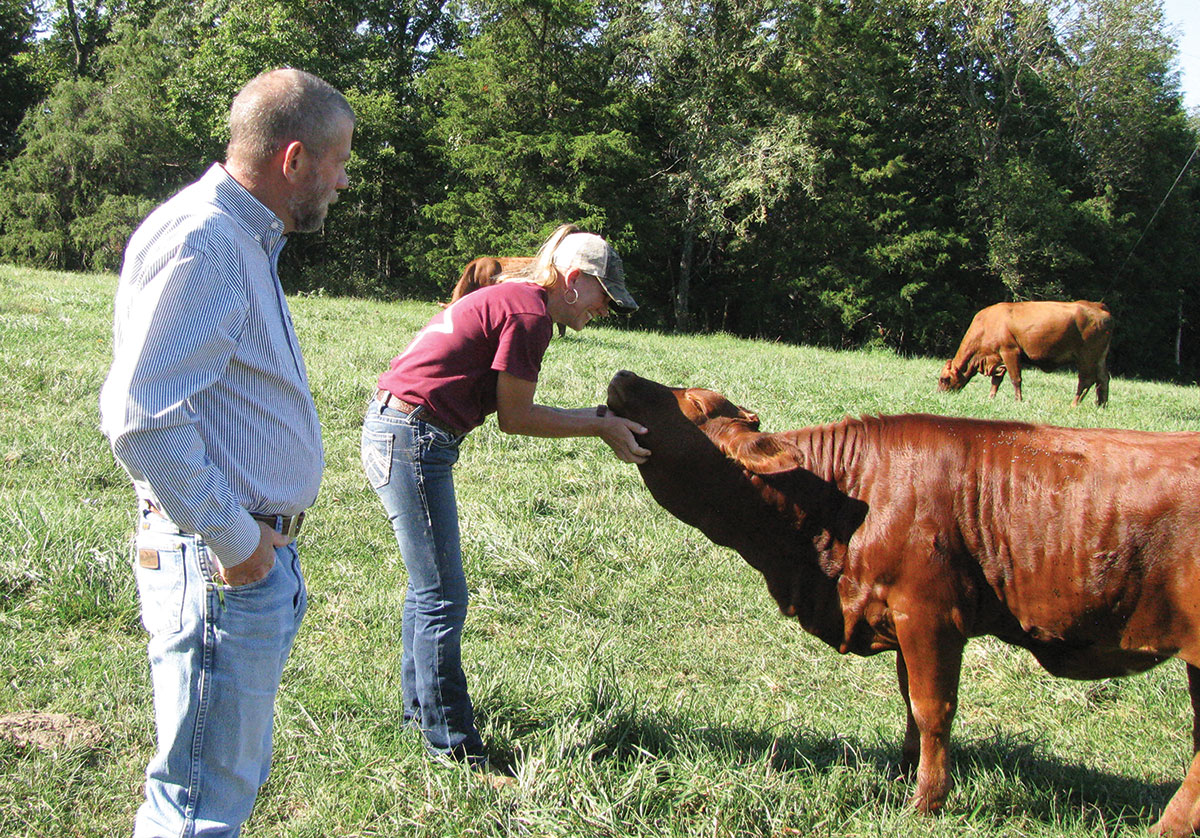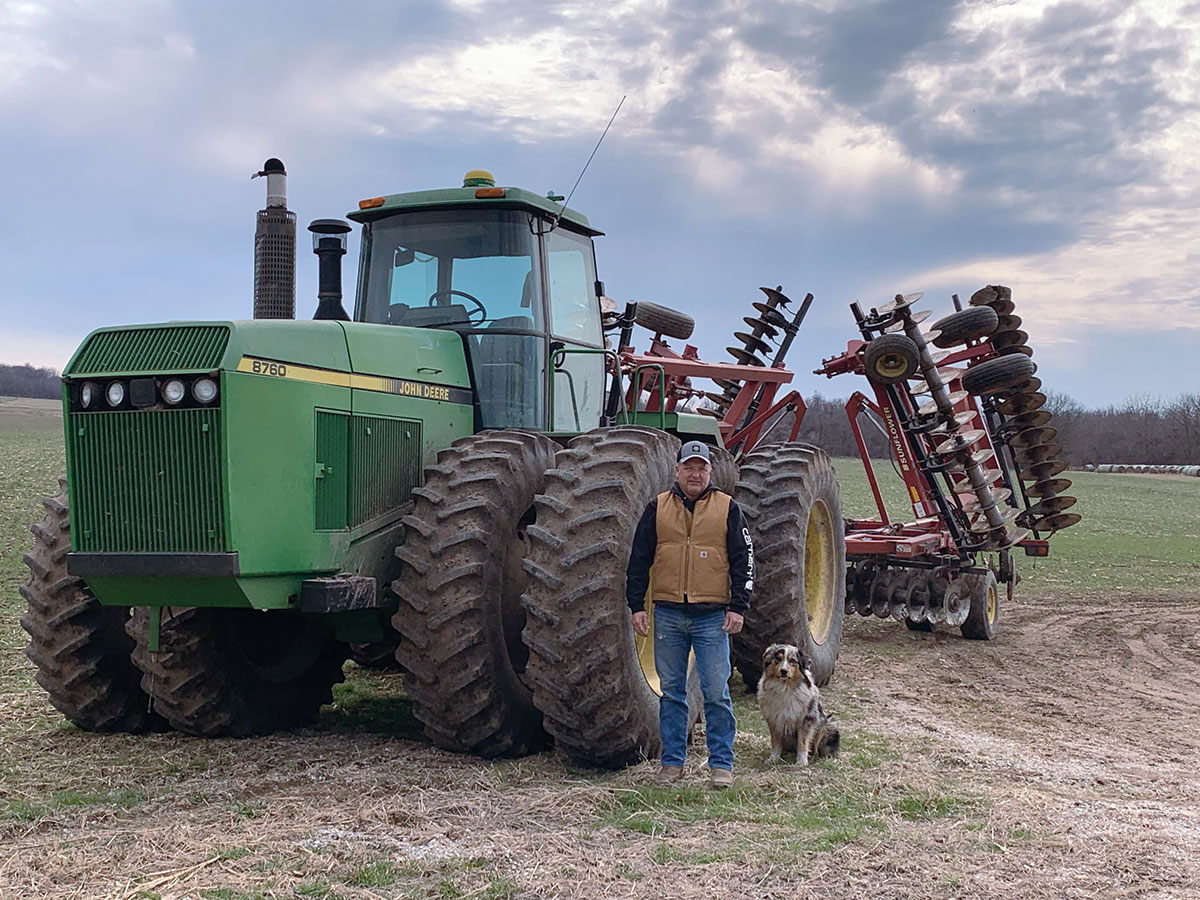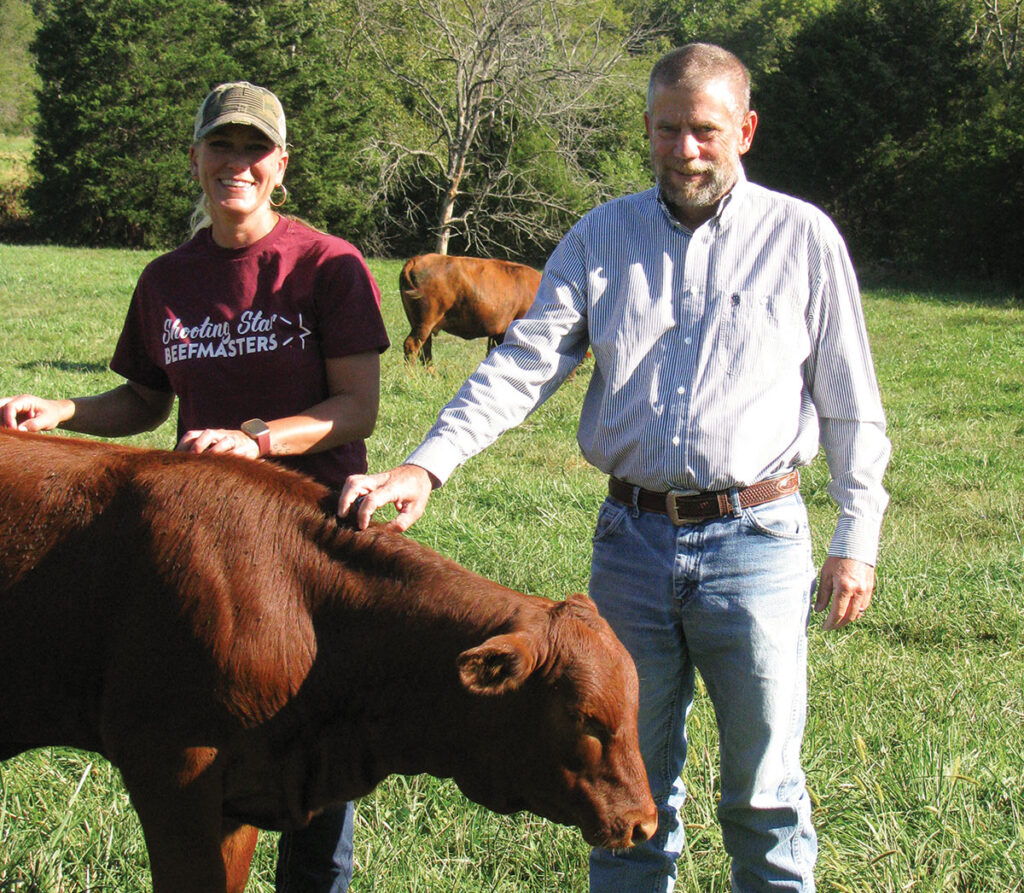
Bruce and Courtney Bassler appreciate the maternal side of Beefmaster cattle
NIANGUA, MO. – Transplants from Maryland, Bruce and Courtney Bassler are thriving on Shooting Star Beefmasters Farm a 72-acre farm near Niangua, Mo., in Webster County.
The Basslers have been married for eight years and have spent the last seven on their Missouri farm.
“I grew up on a beef farm. We went out of business when I was a teenager,” Bruce said. “It’s always been in my blood, and I wanted to get back to it. The East Coast is not the best place to start out with something like that because it’s just so expensive. We couldn’t afford to do it. Courtney wanted to be a part of my dream, and here we are.
Bruce grew up with Limousin cattle but was always intrigued with the Beefmaster breed. “When we got here, we wanted to get some cattle. That’s part of the reason we came here: to get back into the cattle. The Beefmaster breed kind of checked all the boxes. Courtney didn’t grow up around cattle, and I wanted a quiet breed. We both work full time, and we didn’t need a headache breed. The docility of the Beefmaster is just remarkable,” Bruce said.
In April 2020, they bought their first set of Beefmasters. The Basslers now have 34 registered animals.
Beefmasters do very well during the heat.
“They’re half Brahman. They’re a quarter Shorthorn and a quarter Hereford, but they are their own breed,” Bruce said.
“What’s neat about Beefmasters is you can have an array of colors. There isn’t one set color. They can be every color imaginable, from white to black, with every brown and dark red in between,” Courtney said. “They can also vary drastically in their sizes. Some people like a more moderate animal. Some people like the bigger ones, the bigger-framed animals. It’s neat because it’s not cookie-cutter like some other breeds.”
Courtney enjoys the variety of the breed. “You can have everything in between, and I think it’s just wild when you think about it. I have Beefmasters and this is what they look like, and someone else says, ‘I have Beefmasters, and this is what they look like.’ And they could be polar opposites,” she said.
Courtney wishes more people knew about the breed, even commercial cattlemen.
“Beefmaster puts more weight on. As soon as the calves hit the ground, they’re gaining much faster than another breed. So for somebody who’s running a commercial breed, you’re going to get more pounds on your calves quicker,” she explained.
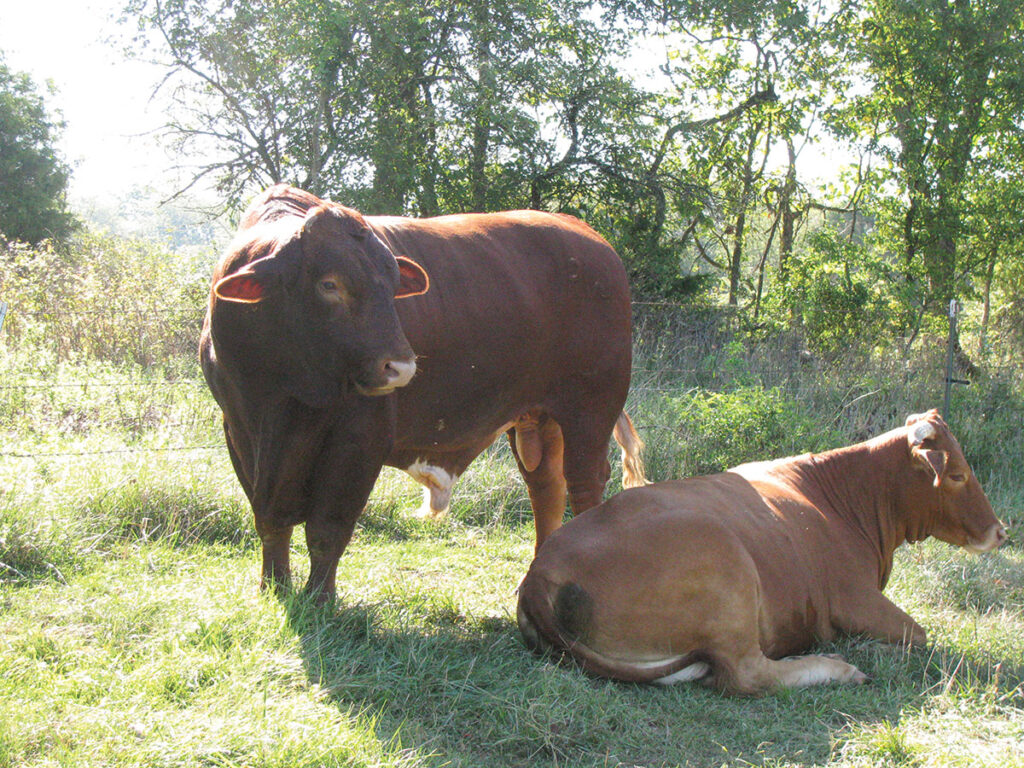
Bruce believes the maternal side of the Beefmaster is their greatest asset. “They’re easy calving. They’re really great mothers, and they milk really well,” he said.
“They’re very attentive to their calves. They’re not going just to calve and walk off,” Courtney added.
Bruce said the udder is a vital and natural maternal instinct when looking for a good cow, as is carcass data.
“She has to have size, structural correctness, milking ability, and good maternal instincts,” Bruce said.
“It’s nose to tail,” Courtney added. “Everything has to line up.”
“There’s a lot of data collected on these registered animals. The more data collected, the better idea you have on what your cattle can do in the future. It’s always a good thing to know the background,” Bruce said.
They chose to use a bull instead of AI, although that is something they may try in the future.
“We thought we could buy a quality bull and have more consistent results in our animals,” Bruce said.
The Basslers believed by buying a good bull and putting it with their animals, the calves would improve.
“With AI, you choose a bull on his numbers and he may not be the greatest,” Bruce said. “Natural breeding is a lot less work for us. You’ve got a good bull and you turn him out and he’s doing the work.”
“The conception rate is not that great. You have to have a bull to clean up afterwards. So you’re still spending money on a bull and AI. Our philosophy was ‘spend the money on a good bull and he does the job.’ It’s really worked well for us.”
“He picked us,” Courtney said of their herd sire. “We had it narrowed down between two bulls and went out to look at them. I stuck my hand out to one of them and he came and licked my hand. So we chose him because he chose us.”
The two bulls were very similar on paper, but it came down to docility.
“We wanted a bull that was going to improve our cattle, had solid EPDs and excellent data. The docility was definitely the deciding factor,” Bruce explained.
They raise seed stock. The average weaning weight for heifers is around 600 pounds and for bulls it is around 700 pounds. They wean the calves at 7 months old. They try to raise bulls to sell, but will cut anything they don’t think is going to make a good bull.
“It’s our name,” Courtney said. “If we register them, our name is attached to that animal and we want to put out the best quality that we possible can.”
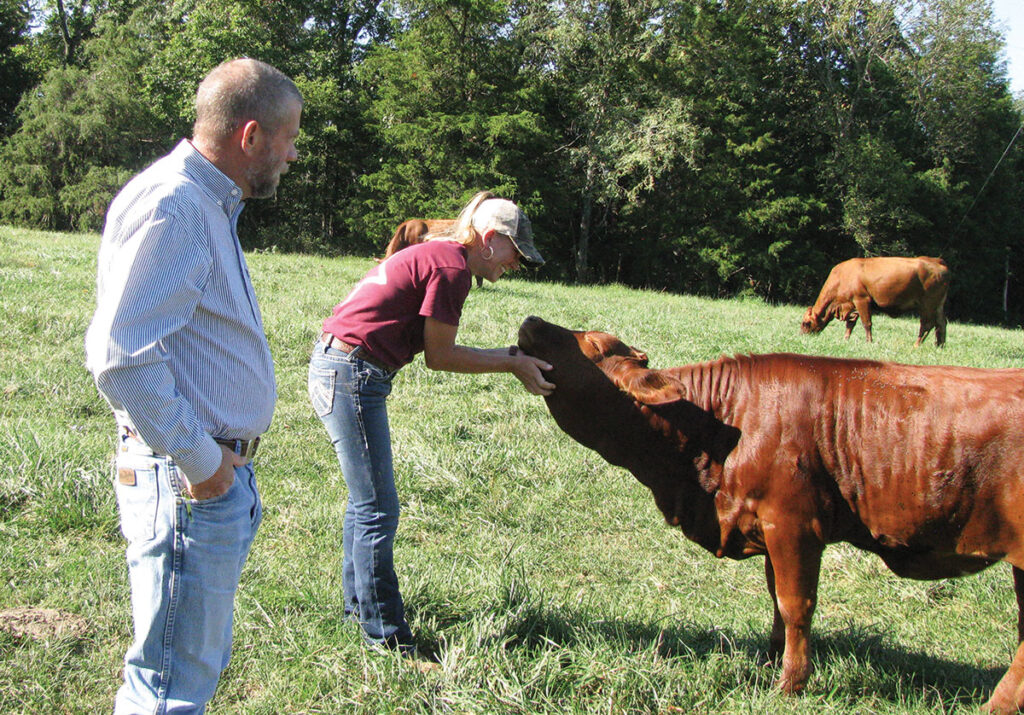
They sell their seed stock at consignment sales. They also sell off the farm, and raise their own beef.
Bruce and Courtney say Beefmaster cattle are very versatile.
“There are breeders in Wisconsin, Minnesota, and then they’re down in south Texas,” Bruce said.
“They’re in Florida and Thailand. There’s tons of them that have been exported from the U.S. to Thailand. It’s really neat. It’s not just a niche’, like I can’t have this breed because it gets too hot or too cold. They can literally thrive everywhere,” Courtney said.
Bruce’s advice to anyone wanting to raise cattle is to “educate yourself. “
“Don’t jump into it and pretend you know what you’re doing,” he said. “Find a reputable breeder and try to educate yourself as much as you can.”
“The people within the Beefmaster community are just outstanding; very, very helpful,” Courtney added. “Pretty much everybody is willing to answer any question that you have, no matter how silly it is. Everybody started from somewhere and you have to learn.”
Weather is very different in Missouri than in Maryland.
“We had lots of snow in Maryland, but it gets colder here. We don’t miss all that snow,” Courtney said.
For Bruce, the biggest thing is the quicker changes in the weather.
“In Maryland they say, ‘If you don’t like the weather in Maryland today, just wait until tomorrow.’ In Missouri, ‘If you don’t like the weather this morning, just wait until this afternoon,’” he said.

